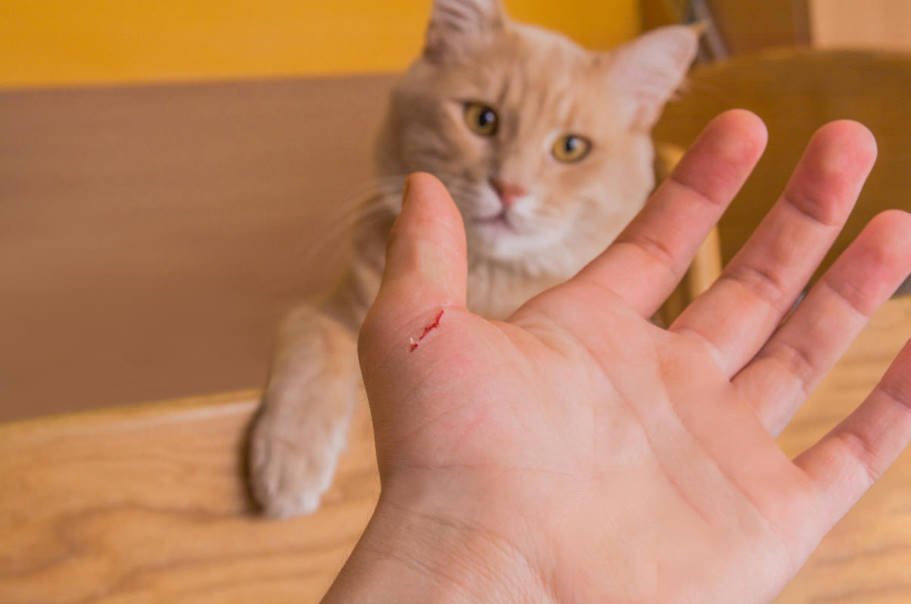
- What if you get hurt after all?;
- What are the wounds;
- Is the superficial wound dangerous?;
- First aid for a small surface cut wound;
- Do you want to tape the wound or not?;
- What if the wound is deep?;
- What if you get hurt and the blood doesn’t stop?;
- What is the difference between venous and arterial bleeding?;
- How to apply a tourniquet when bleeding;
- First aid for deep cut and stab wounds;
- Lacerations: what to do?;
- What if you get deeply hurt by a dirty or rusty object?;
- Should I see a doctor?;
During work or rest on a country site there are a lot of opportunities to get injured. Sharp and dirty garden tools, saws, screwdrivers, wire cutters and other tools may be unsafe. Even if you come to the country to relax, you should be careful. Seriously cut can even be an ordinary sheet of paper, carelessly flipping through the page.
What if you get hurt after all?
First of all, despite the location of the wound and its size, you should be calm. Assess the depth of the cut, the presence of bleeding, the degree of contamination of the wound (the wound is usually called the deformation of the skin, which arose as a result of injury with a sharp object).
What are the wounds
Let’s look at what are the cuts and wounds. Modern medicine classifies skin lesions according to their depth and other criteria. Depending on how the wound looks, it can be called differently.
Wounds can be:
- chipped;
- cut;
- ragged;
- chopped;
- bitten;
- bruised;
- smashed;
- mixed.
A cut is often called a wound caused by a cutting object, and in this article we will analyze in detail the cut, torn and stab wounds.
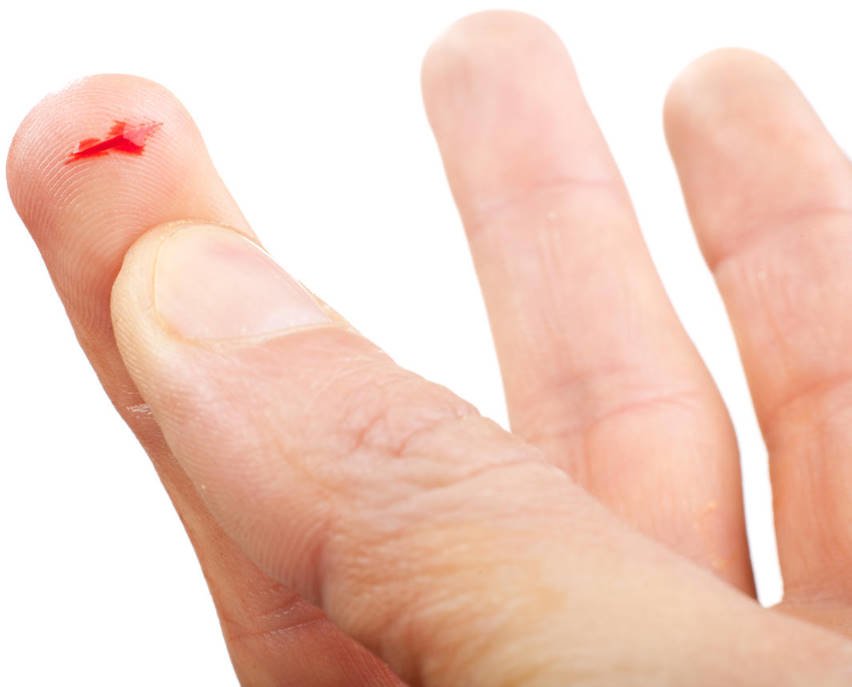
Cut or small wound
According to the degree of damage to the skin, the wound can be superficial or deep. A superficial wound is a wound in which only the skin is damaged, the vessels, muscles or internal organs are not affected.
If the cut damaged any body cavity, such injuries are considered to be penetrating. Penetrating cuts are the most dangerous.
Is the superficial wound dangerous?
A superficial wound or cut can often cause concern. However, if the muscles, tendons or vessels are not affected, many consider the superficial cut to be safe. This is not always the case.
If the damage is caused by a sharp object and is quite extensive, the healing process can stretch. The wound can get an infection that can lead to the most unpleasant consequences. In order to avoid them, it is important to properly process the cut.
First aid for a small surface cut wound
1. Rinse the wound with 3% hydrogen peroxide solution. The composition disinfects and stops small bleeding.
2. If there is no peroxide at hand, you can use chlorhexidine or diluted alcohol solutions.
3. In the absence of all of the above, it is allowed to wash the wound with clean cold water.
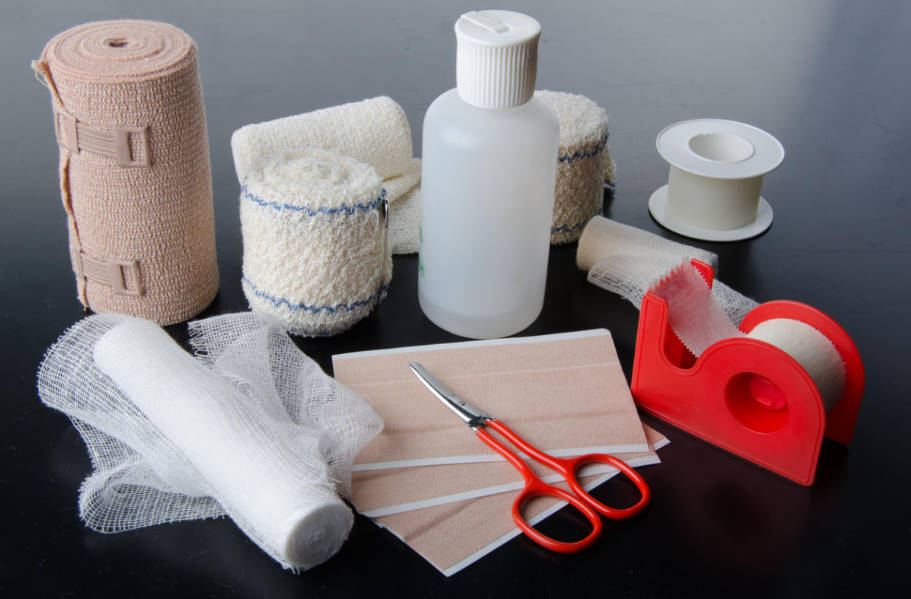
A solution of hydrogen peroxide, plaster and bandages should be in each country first aid kit
Attention! Do not use water from ponds, lakes and other untested sources for washing! If you do not have clean or boiled water, washing with contaminated water can be harmful.
Once you have cleaned the wound, try to combine the edges of the cut together and press tightly. This will help stop the bleeding and speed up the skin recovery. Clean wounds caused by, for example, a knife that you just washed, can be pressed immediately, without washing.
The edges of the wound can be treated with green paint or iodine, if the victim is not allergic to them. Do not pour iodine or green paint inside the cut.
Do you want to tape the wound or not?
If the wound is small, and you do not plan to continue to work with the soil, the cut can not be sealed. Air baths will promote faster healing.
When is it best to seal the cut:
- if the edges of the cut diverge;
- if the wound is large enough;
- if you need to keep working with soil or contaminated materials.

If you plan to continue working in the garden, the cut is better to seal the patch
You can not seal the wound with a plaster:
- deep or puncture — limitation of oxygen will contribute to the reproduction of dangerous bacteria;
- with continued bleeding.
Remember! The patch is not a hemostatic agent.
If you continue to work in the garden after the cut of the skin, be sure to wear rubber gloves. The patch can not protect against the penetration of dirt into the wound if you work without gloves.
What if the wound is deep?
If the cut is deep, affects the muscles or sharply painful, this is an occasion to consult a doctor.
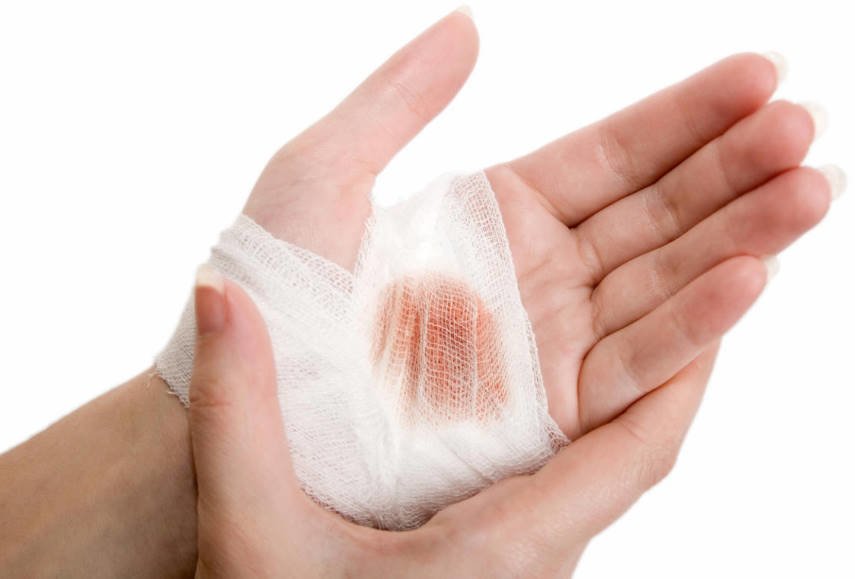
Deep, heavily bleeding wound-a reason to see a doctor!
How do you know the cut is deep? The wound is considered to be deep if:
- visual depth of cut more than 6-7 mm;
- a tendon is damaged or there is a limitation of mobility of the injured limb;
- a large or medium vessel is damaged, which may be indicated by intense bleeding;
- visible adipose tissue.
muscle damaged;
The primary task in case of a deep wound is to stop bleeding.
What if you get hurt and the blood doesn’t stop?
If the bleeding lasts for 5 minutes or more, a dangerous situation is created. The most effective method of stopping bleeding, the source of which is a medium or large vessel — finger pressing. The simplest manipulation is made at the right time can save a life.
If we have already started talking about bleeding from blood vessels, it would be nice to talk about them a little more.
What is the difference between venous and arterial bleeding?
Bleeding from a vein or artery can simply be determined by the type of blood:
- Veins are located superficially, so their damage is quite common. Venous blood is dark red, flows evenly, fills the wound.
- Arterial bleeding is significantly different from venous. The blood from artery is bright scarlet. Blood splashes, gushes or is a pulsating jet.
Remember! With arterial bleeding you have much less time to assist the victim.
How to apply a tourniquet when bleeding
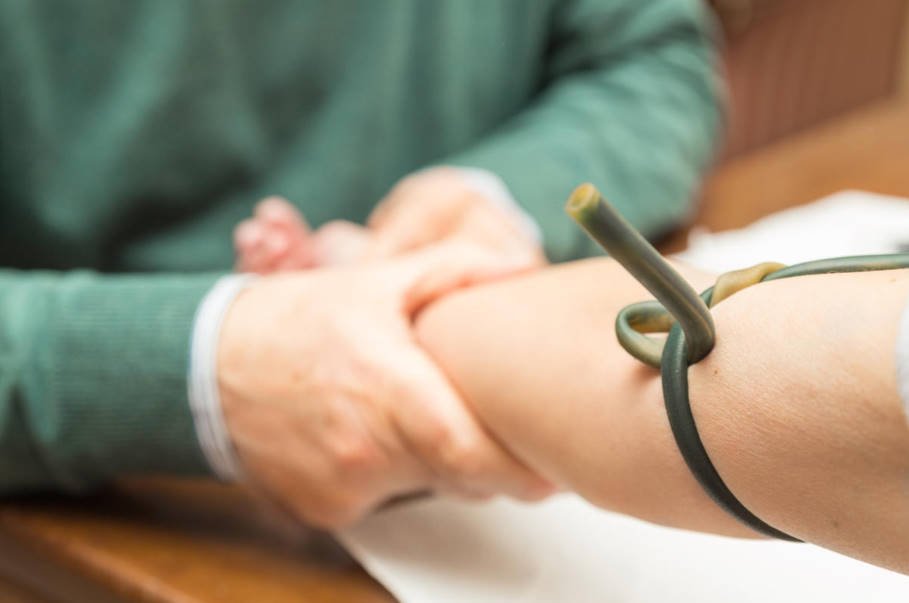
The tourniquet
Venous tourniquet
In venous bleeding, the tourniquet is applied to the limb below the wound site. This is due to the fact that blood flows through the vein from the tips of the fingers to the heart. The venous tourniquet tightly wraps around the limb, but does not tighten too tight.
For the application of the harness is ideal to use a flat rubber band. Improvised great lowered and cut along the camera from a Bicycle wheel. If there is no rubber band, you can use a leather belt, bandage or just a strip of cloth.
If the tourniquet is applied correctly, the bleeding should stop. At the same time, the pulse should be felt on the arteries below the tourniquet. If the pulse is not detectable, it is necessary to slightly loosen the harness.
A tourniquet to stop venous bleeding can be successfully replaced with a clean pressure bandage on the wound.
Arterial tourniquet
Superimposed above the wound site. Should be superimposed as quickly as possible.
The ideal improvised material for applying an arterial tourniquet-rubber jumpers, twisted 2 times. If they are not at hand, you can use a bandage or cloth, pre-twisting it. Under the harness put a layer of cotton fabric.
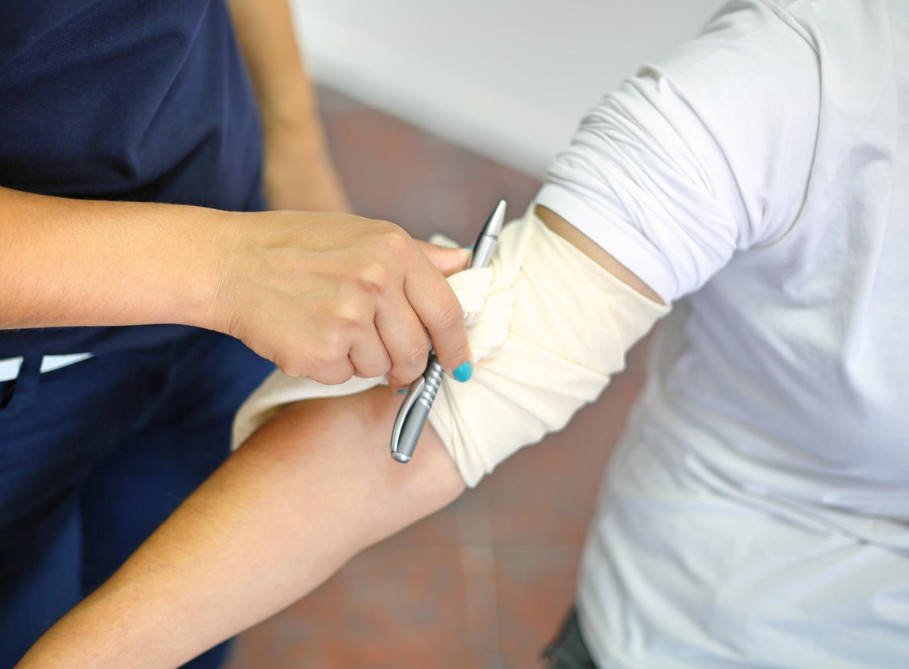
If the rubber harness was not at hand, you can use the materials at hand
The tourniquet on the artery is imposed quite tight.If he is correctly on the limb below the tourniquet pulse to determine not have.
Under the harness be sure to put a note with the exact time of application. For reliability, repeat the recording on the skin of the victim and put a reminder in your phone for 30-40 minutes. Once you fix the time of the tourniquet, you have no more than an hour to deliver the victim to the doctors.
It can be dangerous to keep the tourniquet continuously for longer than 30 to 40 minutes at any time of the year. If the transport time is longer, periodically loosen the harness, replacing it with a finger pressing.
The decision to impose a tourniquet should be taken only as a last resort, with massive arterial bleeding. Important: incorrectly applied arterial tourniquet can lead to tissue necrosis or paralysis.
First aid for deep cut and stab wounds
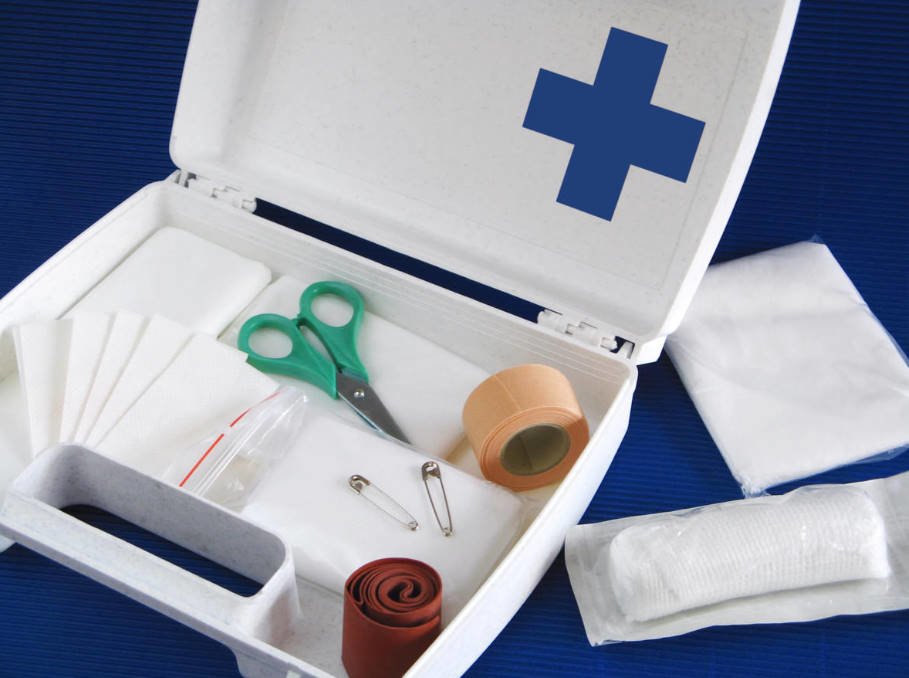
First aid kit
1. Determine the type of bleeding, perform a finger pinch if you see the source of bleeding in the wound.
2. You can perform the plugging of the wound with a sterile napkin moistened with an antiseptic. A good means of helping with a deep wound — hemostatic sponge. It can be found in the car first aid kit of the old model.
3. If you can stop the bleeding, match the edges of the wound with a bandage.
4. If you can not stop the bleeding by the above methods, you should apply a tourniquet.
5. In the presence of a foreign object in a deep wound, it is not recommended to remove it yourself. This is due to the fact that the subject may be hiding an injured vessel, which will open a massive bleeding.
6. Take the victim to the reception Department of the nearest hospital or emergency room. If bleeding continues or a tourniquet is applied, insist on a speedy examination of the doctor, without a queue. Delay in this case can be dangerous.
Important! Do not drive yourself if you have a deep cut and cannot stop the blood. Ask for help from the people around you.
Lacerations: what to do?
Lacerations, unlike cut and stabbed, have uneven edges. If such a wound is shallow, it can heal on its own, if you compare its edges. If the laceration is deep, it is most often required surgical treatment.
The unpleasant consequence of lacerations can be the formation of rough scars. This should be taken into account when placing lacerations on open parts of the body, neck and face.
What if you get deeply hurt by a dirty or rusty object?
If the object you are hurt, contaminated land, you need to make the prevention of tetanus. This is especially true in deep stab wounds.
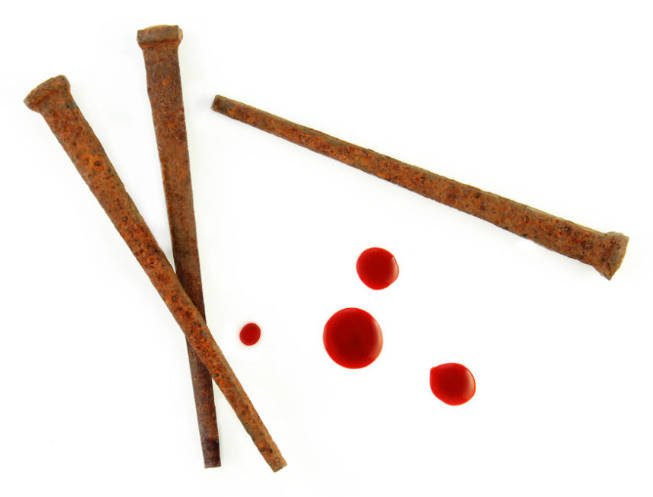
Wounds caused by dirty, rusty objects are very dangerous
Serum should be administered immediately after the injury. In case of frequent contact with the ground, tetanus vaccination is recommended in advance. This procedure will save you from this deadly disease for 10 years.
In addition to the causative agent of tetanus, there are other bacteria that “love” deep wounds. If the wound is stabbed and deep-for example, you stepped on a rusty nail — there is a risk of gangrene. For prevention, the doctor dissects such wounds cruciform for air access and carries out treatment.
Should I see a doctor?
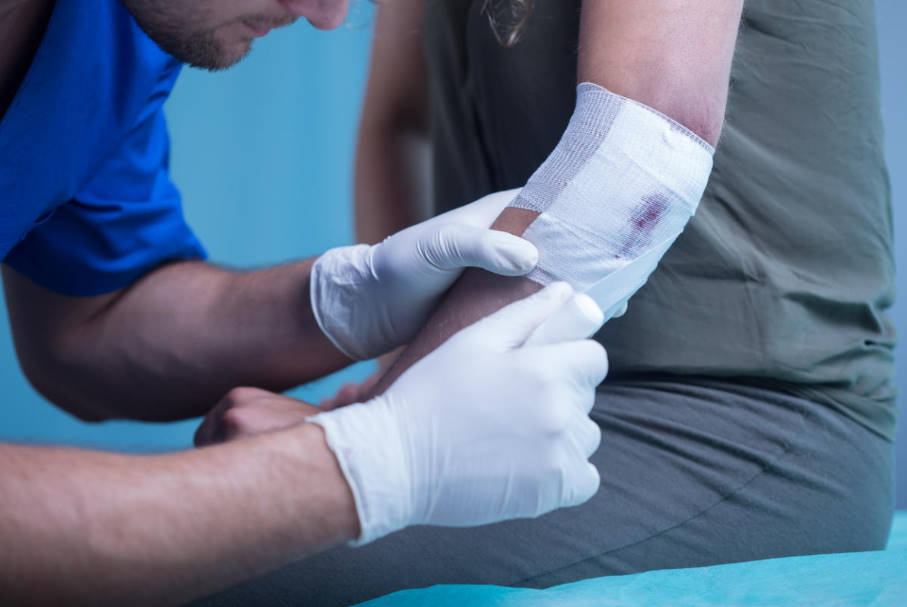
Some wounds require medical attention
Let’s clarify the situation when you should seek medical help from a specialist:
- deep wound;
- continued bleeding for several minutes;
- any wounds on the neck or face;
- puncture wounds contaminated with the subject and the lack of a tetanus shot;
- long cuts or lacerations when it is impossible to match the edges;
- wounds in children or the elderly with weakened immunity.
Instead of concluding, I would like to say: if after reading the article you find it difficult to determine how dangerous the wound is, contact your doctor. No article can replace a visual inspection by a specialist.
Take care of yourself!




Leave a Reply